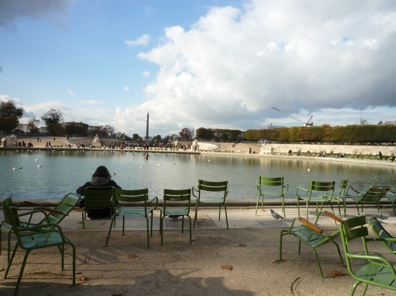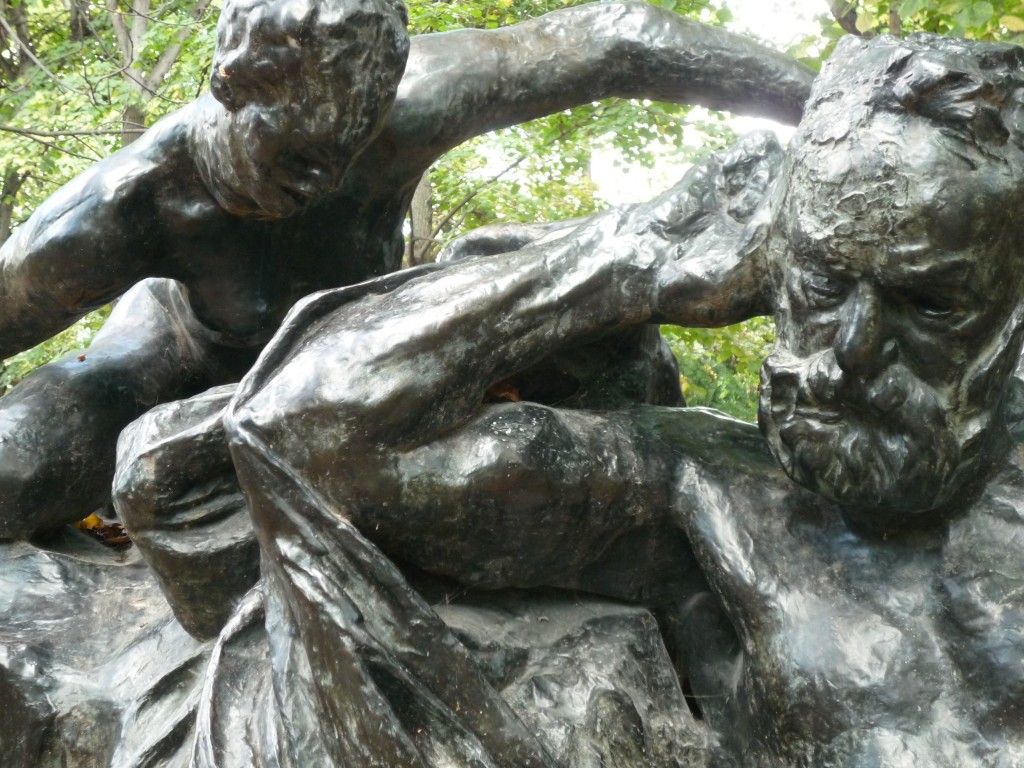Iona Farrell, a second year student in BA (hons) Fashion and Dress History, explored Paris on a recent study visit…

View from the lake in the Tuileries Garden, looking towards the Place de la Concorde. Personal photograph by the author.
On the 4th to 8th of November this year, ten of us from the seminar group ‘A Trip to Paris’ visited the City of Lights. We were graced with beautiful blue skies and sunshine which was the perfect accompaniment to the elegant boulevards of Paris on this highly enjoyable visit.
Before the trip we split into three groups and each group was given a theme, either Love, Luxury or Revolution in Paris, with the task of planning a complete day in the city. Key readings were given to inspire our plans, from Walter Benjamin’s account of the historical passages of Paris to the student riots of the 1960’s. My group’s theme was Love and the book we based our day on was the fascinating novel The Hare with the Amber Eyes by the ceramicist Edmund de Waal. The book traces the provenance of an inherited collection of Japanese netsuke (small hand carved ivory figurines) back to a certain Charles Ephrussi, an art critic and collector in Belle Époque Paris.

Study in the Musée Nissim de Camondo. Built in 1911, with 18th century furniture and decoration. Musée Nissim de Camondo, Paris. Personal photograph by the author.
Inspired by the book, we decided to base our day on different forms of love, starting from the love of collecting, as seen by Charles Ephrussi and also the sensual side of love seen through the sculptor Rodin’s evocative works. Our first visit was to Musée Nissim de Camondo, which houses a collection of 18th century French furniture and decorative arts collected by Moïse de Camondo. The house is located on the distinguished Rue de Monceau, the same street Charles Ephrussi had lived on. Charles and Moïse were both passionate collectors and stepping into the Nissim de Camondo felt more like a home than a museum. It was filled with the most opulent rooms including a room solely dedicated to displaying porcelain dinner sets and tea services!

Auguste Rodin. Monument to Victor Hugo. 1890. Bronze. Musée Rodin, Paris. Personal photograph by the author.
From there we went to the Musée Rodin, in which sculptures were interspersed amongst the grounds. I really enjoyed how they were placed outside: you could come close to the sculptures and see the expressive way Rodin rendered figures. We ended the day in the Musée d’Orsay, the grand converted railway station, which houses an extensive collection of Impressionist works. It was amazing to walk through the museum and recognise so many paintings that we had looked at in our lectures.

View of the interior of the Panthéon, Paris. Built between 1757-1791. Personal photograph by the author.
The diverse themes meant that each day was a completely different experience. Days were not just spent wandering around museums but actively exploring the city and its many facades. The Revolution day was spent walking around the Sorbonne area in Paris, the ‘University’ district where the 1968 student riots had taken place. During the tour we came across the Panthéon and made an unplanned but extremely worthwhile visit, exploring the endless labyrinth of underground tombs that house France’s leading citizens. Afterwards we crossed over the Seine and visited the Centre Pompidou. Built in the aftermath of the Student Riots, it houses a permanent collection of Modern art as well as a public library and music centre. We all had differing opinions on the museum, its industrial design was a real anomaly amongst the uniformity of the boulevards. Although I think its unconventional appearance was suited to its interior, housing challenging and experimental Modern artworks.
For the Luxury themed day we traversed through Paris from our hotel in Montmartre, in the North, down to the Seine and the beautiful Tuileries Garden. The route took us through the historic passages of Paris, beautiful arcades dating back to the 18th century, dedicated to the luxurious pastime of shopping. The most elegant passage was the Galerie Vivienne, with mosaic floors and a glass ceiling, it was filled with quirky boutiques and fashion stores. The French designer Jean Paul Gaultier also has his flagship store here, and we peeped through the window at his eclectic designs. From there we walked along the Seine to the Musée d’Art Moderne and visited the Sonia Delaunay exhibition, which was bursting with endless samples of her bold, colourful textiles, as well as her earlier portraits which I admired.
Visiting Paris really brought the History of Art and Design course to life. Walking through the arcades where fashionable 19th century Parisians had browsed boutiques, or strolling through the streets which had seen numerous Revolutions; the streets all seemed to have their own narrative and I can’t wait to return and discover even more.

This is a really inspiring article, makes me want to go to paris immediately! Beautiful writing 🙂